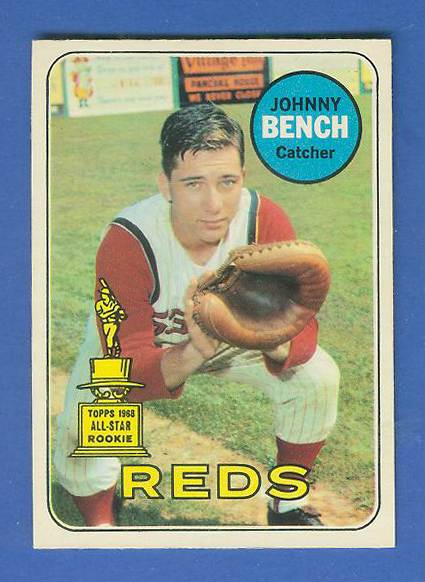Below are short bits & pieces on sportscard & baseball trading card collecting.
Please wander around the website for more info, prices, values & images
on vintage baseball, football, basketball, hockey, sport and non-sports cards.

Vintage Topps 1956 Baseball Cards
Checklist & Prices


1956 Topps were slightly larger (3-3/4" by 2 5/8") horizontal cards
similar to 1955 Topps cards, some even sharing portraits with 1954 and 1955
Topps cards. Team cards & checklists appeared for the first time in 1956.
With Bowman gone, after missing the last 3 years, Mickey Mantle was back !!!
A fun & simple set, 1956 Topps had no high numbers or expensive rookies
but for serious 1956 collectors, there are over 200 variations.
Most variations deal with card stock (gray or white back).
For #101-180 gray appears to outnumber white about 9-to-1.
Many team cards had 2 or 3 variations with team names
Left, Center or Right.


There are 2 great cards: #31 Hank Aaron which actually pictures Willie Mays
sliding home and #135 Mickey Mantle.
Mantle shown leaping high into the stands robbing a home run !
Artist did a great job showing Mantle making the catch !
BUT ... Mantle looked great leaping but the ball flew over his glove.

The 1956 Topps Pins used same portrait photos as the cards.
Click for complete
1956 Topps Pins Checklist and Prices
Click for more info and complete
1956 Topps Baseball card checklist, values and prices.
|

1971 Kellogg's
1971, Kellogg's second and by far scarcest and most valuable set,
contained 75 different players on 2 ¼” by 3 ½” cards.
The cards were plastic coated giving them a 3-D look !!!
The plastic coating also made high grade cards nearly impossible find.
Over time and the elements, most cards would curl making light and heavy
cracks very common.
As opposed to Kellogg's other issues which were available from the company as complete sets,
1971 Kellogg's cards were ONLY available one in each specially marked box of Kellogg's cereal.
The only way to complete your 1971 Kellogg's set was to pester mom to buy, buy, buy more boxes of cereal.
In addition to the 75 different players, numerous scarcer variations exist
with minor differences in the stats on back. In addition, all 75 cards and
some variations are found with 2 different forms of copyright on the back:
XOGRAPH ( 80 total cards)
@1970 XOGRAPH (121 total cards)
The numbers above may not be 100% accurate.
The "toughest" cards appear to be:
# 7 Alou (1970 Oakland NL)
# 28 Wright (Angles Crest Logo)
# 54 Johnson (Angles Crest Logo)
# 64 Fregosi (Angles Crest Logo)
# 70 Osteen (No Number on back)
# 2 Seaver (ERA 2.81)
# 41 Gaston (113 Runs)
# 65 Rose (RBI 485)
|


1968 Topps Action All-Star Stickers
Checklist & Values
1968 was an awesome year for Topps test & oddball issues with
Game cards, Player Posters, 3-D cards, Plaks, Discs, Punchouts
and these "Baseball Action Stickers" also called "Action All-Stars
Stickers".
"Baseball Action Stickers" were STAR-PACKED 3-panel sticker strips,
some with facsimile autographs. There were (16) different strips in the
set but only 12 are totally different. #13 thru #16 re-used panels from
#1 thru #12.
Strips were perforated, folded at joints and put in packs.
 Boxes had 12 packs (10 cents each) with 1 sticker per pack. Sets could be
made back then for $1.60. Today, the Mantle panel goes for around $2,000.
Boxes had 12 packs (10 cents each) with 1 sticker per pack. Sets could be
made back then for $1.60. Today, the Mantle panel goes for around $2,000.
Collectors often collect just individual panels as complete strips are
so scarce, fragile & EXPENSIVE.
Single panels themselves are quite scarce - in 20+ years PSA has graded
just over 200 TOTAL compared to over 1,000 1952 Mantles !!!
PROOF sheet below is missing the facsimile autographs.

Another interesting issue:
1960 Pirates Tag-Ons Baseball Stickers
|

Baseball card collecting terms (part G)
Grade/Condition Centering, corner wear, photo clarity, edges,
creases, print flaws ... all combine to determine a card's condition or grade.
Along with rarity/scarcity it is the major factor in a card's value.
Graded Card As values increased the condition of cards and the
determination of fakes and alterations became increasingly more important.
Various companies became "graders" of your cards. For a fee they would grade
your card (usually on a 1 to 10 scale) and then placed in a sealed plastic
holder with labelling of the vital information.
From past experiences, most people are NOT HAPPY with the grades they receive.
To keep values up, graders can be extremely picky. Things you don't see,
they do so don't be surprized when the NEAR MINT card you send in ends up
with an EX or EX/MINT grade.
There are TOO many grading companies - if you do, do choose carefully.
PSA / SGC / GAI / BGS are some of the many companies.
It is good to know that getting a card graded by a company that people
do not recognize or respect will usually just cost you time and money
and not help you in any way.
© 1995-2019 "InterNet's Baseball Card Store" / Joseph Juhasz ... All Rights Reserved
|








